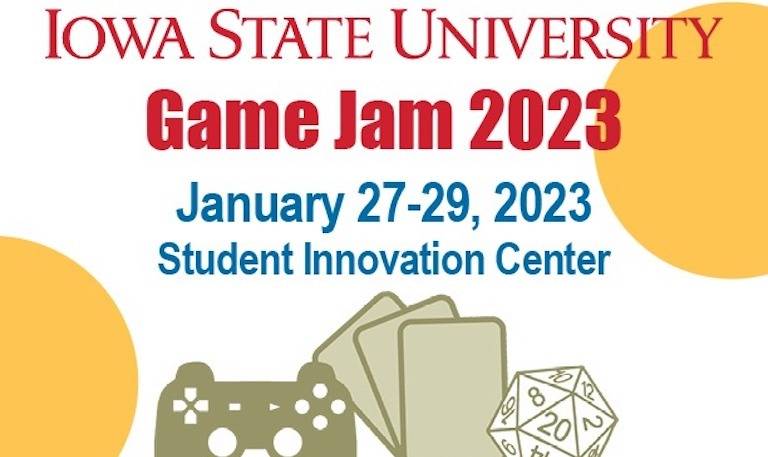Parents worry children spend too much time playing video games, but there are plenty of opportunities — especially with serious games — to build collaboration and social skills. Game2Work (G2W) is a research community on campus that uses games to strengthen work and learning for the digital generation.
“Games have a stigma attached to them, where some people think it’s a waste of time,” said Michael Dorneich, professor of industrial and manufacturing systems engineering and co-lead on the project. “There is a lot of serious work with a lot of serious intentions with what you are trying to produce.”
School of Education assistant professor Michael Brown, a G2W co-lead, said games are good at engaging people. Many games focus on cooperation or building STEM skills. Cooperative games — It Takes Two or Overcooked, for example — are not based on competition, because winning occurs by working with teammates. Other games act as gamified tutors, giving students the opportunity to learn with someone else. To succeed, they must work together to solve challenges.
Pathfinders
Within G2W, pathfinder projects assemble a group to focus on a topic. One of the most successful so far is a game jam, geared toward undergraduates or middle schoolers who spend two to three days on campus addressing a problem by building a game. Mentors work with the groups, keynote speakers share experiences, and judges determine success after students’ presentations.
“Giving them authentic experiences in STEM demystifies it a little bit,” Dorneich said. “They realize they can see themselves doing it while counteracting a lot of negative messages groups receive.”
STEM
Brown works to help teachers supplement STEM education with serious games. The goal is to provide hands-on learning that offers a break in the way information is delivered. Serious games like Wingspan or Photosynthesis that focus on teaching science concepts are ideal for supplementing the existing curriculum. They reinforce important concepts for young learners by engaging them in play, he said.
Teachers take existing games and implement them while adding elements of gamification into their curriculum. Brown is helping ISU Extension and Outreach and 4-H clubs build toolkits so instructors have a ready-made lesson plan.
“If you ever watch a young person play a game, they die, come back and do the task again,” he said. “If you ever watch them try to solve a math problem, they don’t necessarily have that mindset. They are often not thinking, ‘What did I do wrong? How do I do it differently? How do I do it again?’ Games can cultivate persistence.”
Brown also developed a personalized dashboard in Canvas for undergraduates in a variety of STEM courses that use gamification techniques to encourage engagement. The dashboard breaks down successful actions students need to take in their class weekly, areas of strengths and opportunities for improvement on assignments, class ranking for those motivated by competition, and badges earned for success in concepts.
Brown, who has had three cohorts of students use the dashboard, sees improvement by about half a letter grade compared to students not using it. He hopes to work with community colleges across the state to implement the dashboard.
Getting Started
G2W began in 2020 through a four-year Presidential Interdisciplinary Research Initiative grant. The grant supports the beginning stages of new interdisciplinary research that has strong potential to attract external funding.
“It brings researchers at Iowa State together to begin research that would otherwise not happen,” Dorneich said. “The hope is it leads to newer, bigger grants, more outreach and creates a center of research here.”
Dorneich said the high use of games in teaching and research at ISU makes it a natural place to begin and develop that work. Currently, the core group has 12 faculty members, ranging from the School of Education to the psychology and several engineering departments. Game projects enhance research and teaching. For example, electrical engineers use them to teach cybersecurity.
The group meets monthly year-round to build community.
First Conference
October’s inaugural Game2Work Day allowed the team to bring statewide entrepreneurs, educational technology experts, game developers and others to campus to share ideas. The day included an expert panel, breakout sessions and four-minute lighting talk presentations. Attendees learned about G2W, but also it served to educate faculty on needs and trends in their research.
Dorneich said one of the biggest takeaways from the six-hour gathering was how large of an appetite exists on both sides.
“Employers want to hire ISU graduates, but marrying all the skills needed is a work in progress,” he said. “Students have a strong desire to work in the gaming community, but the path can be challenging.”
There already is an effort to develop an undergraduate gaming major because the need stretches beyond designers to individuals who can help round out content and information — story, music and visuals — to games.
The post Game2Work strives to demystify STEM, show games value appeared first on www.research.iastate.edu.


